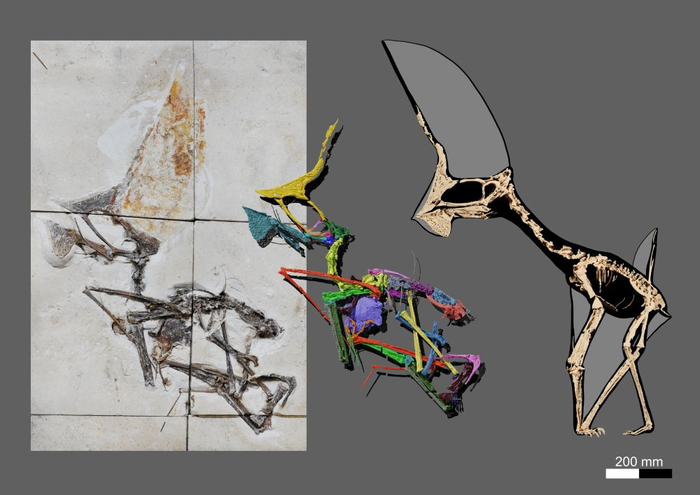A fossil confiscated during a 2013 police raid in São Paulo, Brazil has recently been identified as one of the best-preserved — and first complete — specimens of a rare, flying pterosaur.
Research published in the August 2021 peer-reviewed journal PLOS ONE described the “exceptionally” well-preserved fossilized remains of Tupandactylus navigans as “bringing new insights” into a relatively understudied dinosaur species. Until now, T. navigans was only known to science through the study of a limited number of skull specimens.
Victor Beccari, the lead study author, told Snopes that the Federal Police of Brazil recovered the specimen when they were investigating a fossil trade operation in 2013. Under "Operação Munique" (Operation Munich), authorities recovered over 3,000 specimens from storage units in the states of São Paulo, Minas Gerais, and Rio de Janeiro.
“Fossils in Brazil are protected by law, as they are part of the geological heritage of the country. Therefore, collecting fossils requires permission, and the trade and private collections of fossils are illegal in Brazil,” Becarri told Snopes.
“However, many fossils are lost due to illegal trading every year, as fossils in private collections cannot be described scientifically, and even fossils that are now in museums abroad are hard to access for Brazilian paleontologists.”
T. navigans is housed within the geneological group Tapejarids, a subgroup of flying reptiles collectively known as pterosaurs, that date back to the early Cretaceous some 115 million years ago. With enormous head crests and a wingspan of up to nearly 9 feet, little is known about the lifecycle of these pterosaurs in large part because scientists have not recovered a fully intact fossilized animal.
The newly described specimen was preserved in six square-cut limestone slabs from the Araripe Basin in northeastern Brazil, a “Geopark” characterized by its abundant geological records and fossils and described by Beccari as one that has quarries for limestone extraction and is “fossil-rich.” The entire body, along with soft tissue found along with the bones, was housed within six yellow-colored limestone slabs cut in rectangular portions, a method typically used by quarry workers extracting paving stones from outcrops.
When joined together, the researchers wrote that these slabs “perfectly tie all parts and bones that had their pieces separated by these cuts.”
Researchers placed the slabs together and CT-scanned the remains to reveal the bones concealed within the stone.
“We described the most complete tapejarid fossil from Brazil, a partially articulated skeleton of T. navigans with soft tissue preservation. This specimen brings new insights into the anatomy of this animal and its constraints for flight, arguing for terrestrial foraging ecology,” wrote the researchers in a news statement.
The animal’s long neck and proportion of limbs indicated that it likely foraged for food on land. T. navigans also had a large head crest that would have made flying long distances difficult. Altogether, the research team said that the findings shed “new light” on the anatomy of the species and its clade all together.
The fossil is currently housed in the Geosciences Institute of the University of São Paulo and is referred to as the museum’s “crown jewel.” The team said it hopes to continue studying the creature's unique anatomical features to better understand the lifecycle and makeup of the enigmatic flying reptile.

